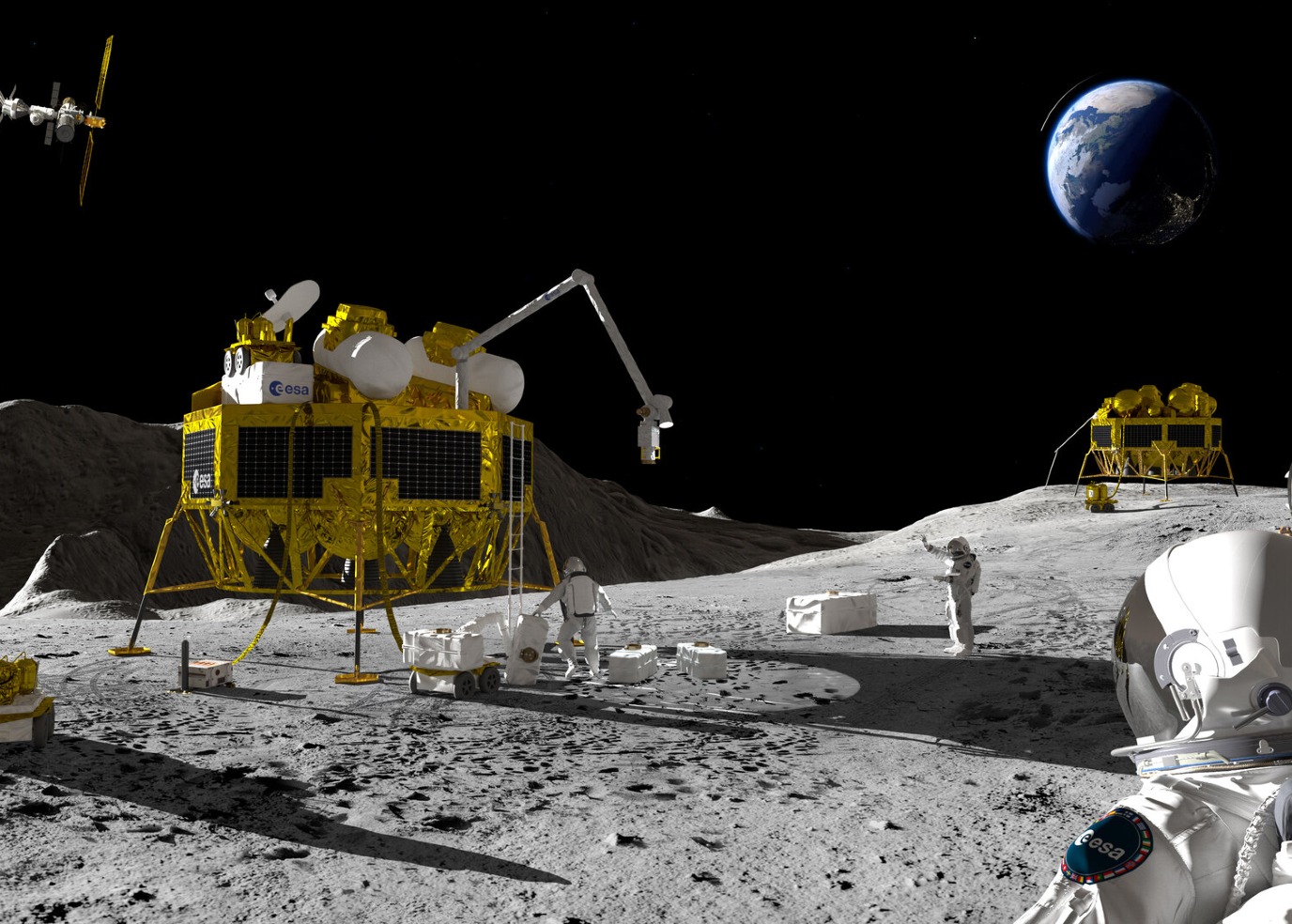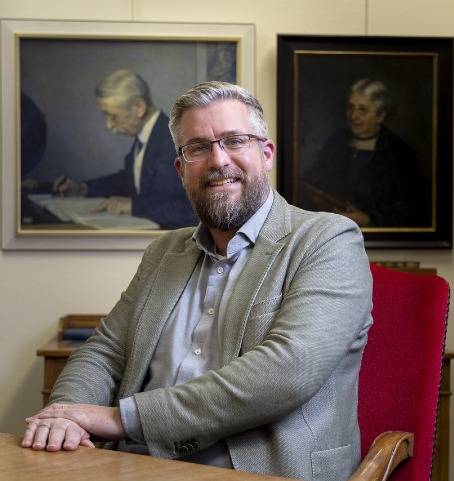We gaan een radiotelescoop op de achterkant van de maan zetten

Op een dag vroeg de European Space Agency (ESA) aan professor Léon Koopmans van de Rijksuniversiteit Groningen: wil je misschien een radiotelescoop op de maan zetten? Zijn telescoop mag meeliften met ESA’s maanlander Argonaut , maar voordat het zover is moet er nog veel ontwikkeld worden.
FSE Science Newsroom | Charlotte Vlek
Met een radiotelescoop op de maan wil Koopmans bekijken hoe het heelal eruitzag ten tijde van de Dark Ages: de periode na de Oerknal, voordat de eerste sterren gevormd werden. Alles was toen duister en gehuld in een nevel van waterstof. Die duisternis maakt het juist een interessante periode: het kan ons inzicht verschaffen in fundamentele natuurkunde, zonder dat de waarnemingen gedomineerd worden door licht van sterren.
Niet meetbaar vanaf aarde
Van dat vroege, duistere heelal is natuurlijk niets te zien met een gewone telescoop. Maar wel met een radiotelescoop: de waterstofatomen gaven radiostraling af, het zogenaamde 21-centimeter signaal, genoemd naar de golflengte van de 21-centimeter lijn. De straling die ons nu bereikt, heeft een lange weg afgelegd en maakt het dus mogelijk om ‘terug in de tijd’ te kijken.
Het signaal wordt grotendeels afgeketst door de buitenste laag van onze dampkring, en wat resteert wordt overstemd door het tumult van radiosignalen dat we zelf op aarde uitzenden.
Koopmans werkte al met telescopen op aarde die het 21-centimeter signaal waarnemen, zoals LOFAR (verspreid over Europa met het hart in Drenthe) en NenuFAR (Frankrijk). Maar die kunnen de straling uit de Dark Ages niet oppikken: dat signaal wordt grotendeels afgeketst door de buitenste laag van onze dampkring, en wat resteert wordt overstemd door het tumult van radiosignalen dat we zelf op aarde uitzenden.
Koopmans legt uit: ‘Naarmate de signalen van langer geleden zijn, hebben ze ook een langere golflengte.’ Terwijl ze naar ons toe reisden, zijn ze door de uitdijing van het heelal uitgerekt; ongeveer zoals het geluid van een politiesirene lager wordt als de politieauto van je af beweegt. Ze zijn door die uitrekking enkele (tientallen) meters lang geworden, en vallen daarmee in hetzelfde bereik als een heleboel andere signalen. Juist doordat ze zo oud zijn, zijn ze dus extra moeilijk op te pikken. Maar op de maan zou dat een stuk beter moeten gaan.

Wat moeten we bouwen?
De grote vraag voor Koopmans en zijn team is nu: wat moet je bouwen om zoiets te kunnen doen? Koopmans somt op: ‘Zo’n radiotelescoop moet compact zijn, simpel, lichtgewicht. We moeten goede algoritmes ontwikkelen om de gegevens te verwerken, maar ook een goed systeem dat opgewassen is tegen de wisselende temperaturen op de maan: tussen -170 en + 100 graden Celcius.
In een uitgebreid onderzoek samen met veertig ingenieurs van ESA heeft Koopmans al in kaart gebracht over welke aspecten moet worden nagedacht. Dat moet de komende periode verder uitgewerkt worden met collega’s verspreid over Europa. Koopmans: ‘We denken na over energievoorziening. Zonnepanelen lijken een uitkomst, maar een batterij kan niet tegen die lage temperaturen. Dan zou je je energie kunnen gebruiken om die batterij warm te houden, maar heb je weer geen energie over om daadwerkelijk metingen te doen en data naar aarde te sturen. Je zou alles kunnen ingraven om de temperatuurschommelingen te dempen, maar hoe moet dat dan gebeuren?’
Grote hoeveelheden data verwerken
Ik zet een radiotelescoop op de achterkant van de maan. Hoeveel mensen kunnen dat nou zeggen?
Snel naar de maan
Genoeg voor het team om zich in vast te bijten dus. Het plan is nu dat Europese maanlander Argonaut van ESA rond 2030 naar de maan gaat, en dat er alvast wat apparatuur mee kan om te testen. De volledige en veel grotere telescoop volgt rond 2035. In termen van ruimtemissies is dat al ontzettend snel, maar de resultaten van het onderzoek laten dan nog even op zich wachten. Er moet zeker 10 jaar aan metingen gedaan worden voordat er conclusies uit getrokken kunnen worden.
Hoe Koopmans gemotiveerd blijft voor zo’n grootschalig project? Hij vindt alle aspecten aan dit project machtig interessant. En bovendien, zegt Koopmans: ‘Als ik met een buurman praat over wat voor werk we doen, dan kan ik zeggen: ik zet een radiotelescoop op de achterkant van de maan. Hoeveel mensen kunnen dat nou zeggen?’
Referentie
Meer nieuws
-
02 december 2025
Student Menna Zahran wint Unilever Research Prize
-
27 november 2025
Vliegtuigen spotten met een radiotelescoop
